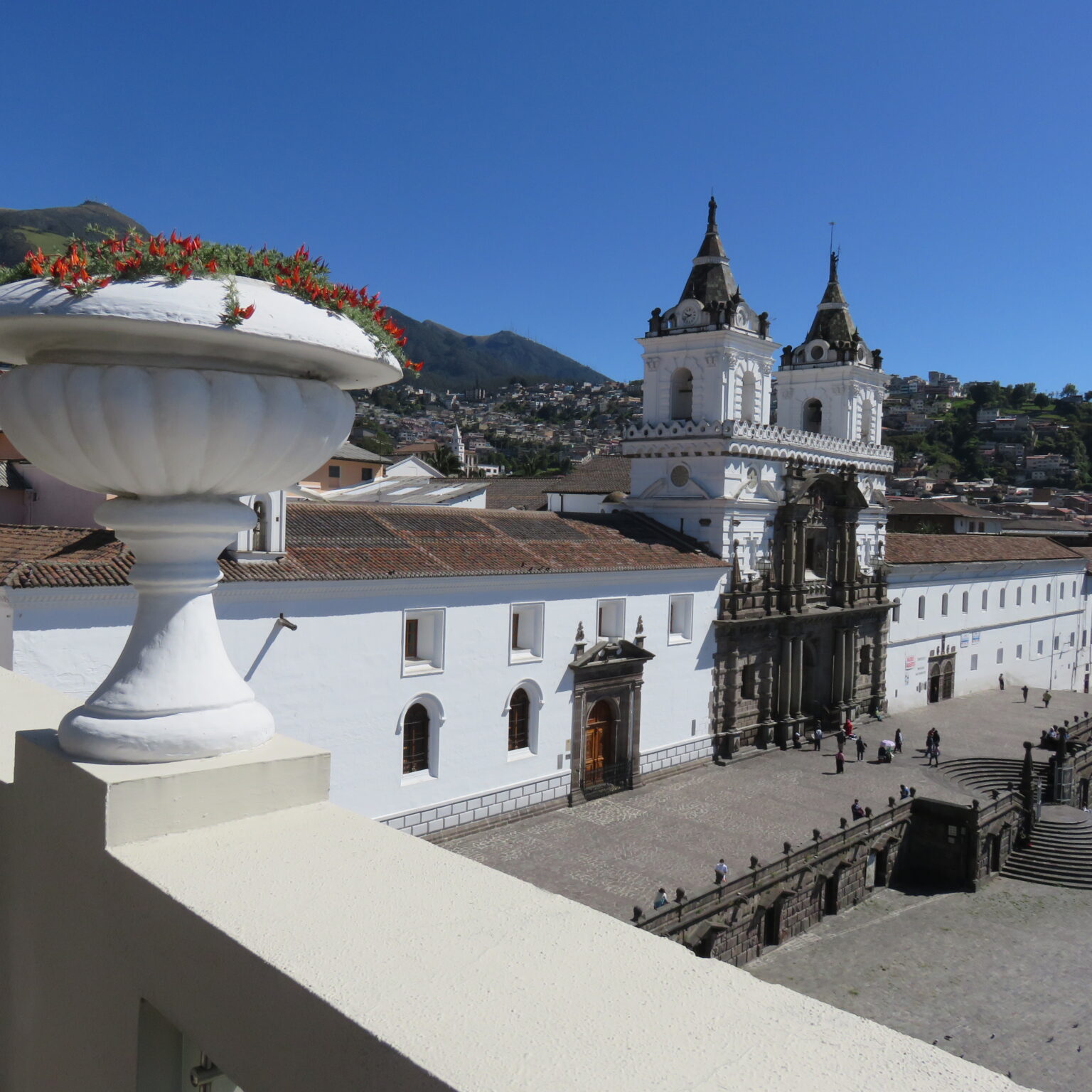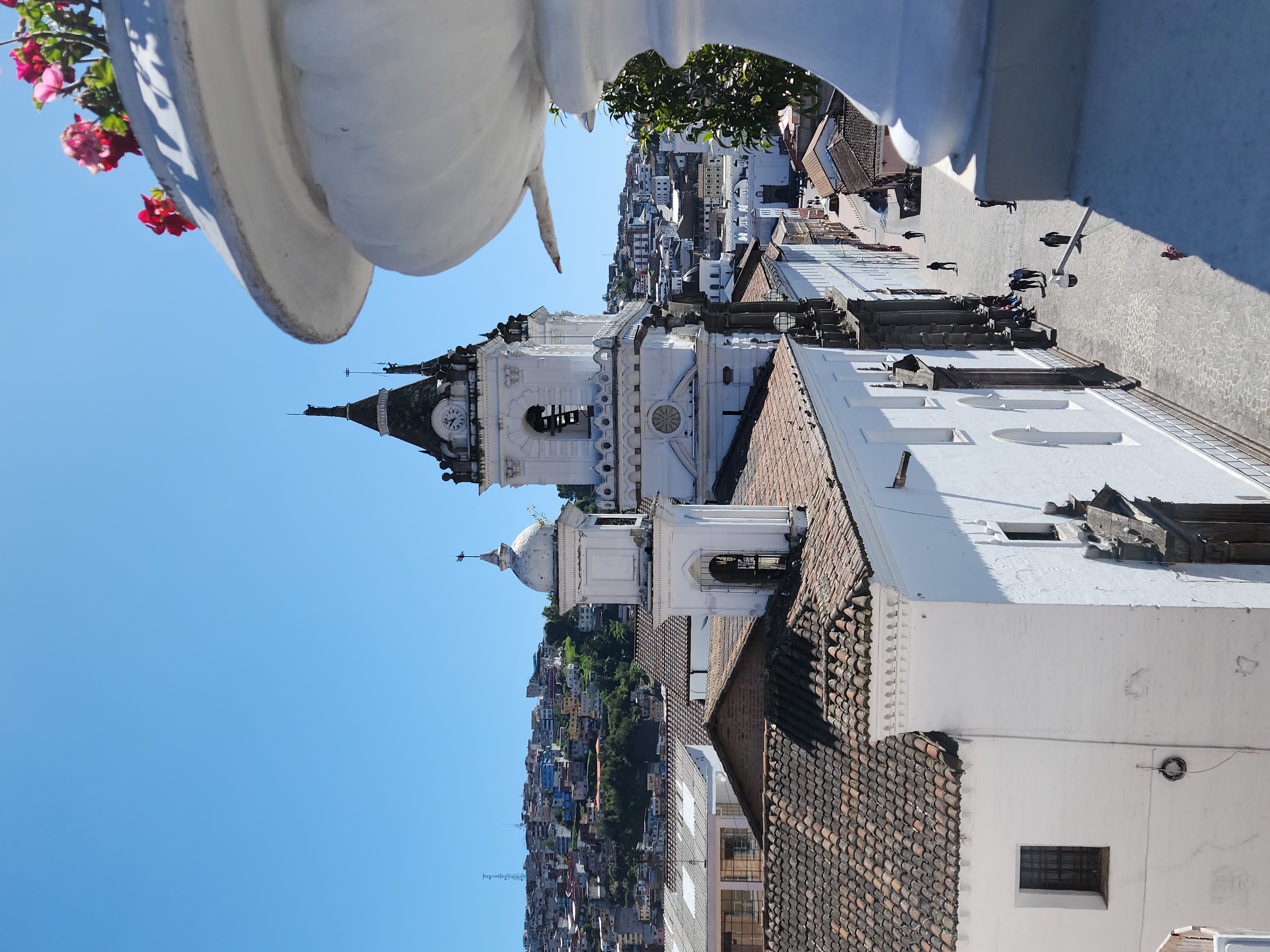Español
Historia inicial
Fundado en 1702 tras el terremoto de Latacunga, el convento acogió a las Carmelitas Descalzas en Quito. Fue sostenido por donaciones de familias nobles y del clero, convirtiéndose en un centro religioso y cultural influyente.
Arquitectura exterior
Su fachada de piedra es austera, con portón enmarcado por roleos y escudos. Las torres son sencillas y el frontón triangular refuerza el estilo sobrio, de influencia franciscana con rasgos medievales.
Arquitectura interior
Organizado en claustros y patios, resalta su iglesia de cruz latina. Alberga retablos barrocos, el púlpito tallado en cedro de 1746 y esculturas de gran calidad, reflejando la mezcla de espiritualidad y arte.
Patrimonio artístico
El convento guarda obras de la Escuela Quiteña, entre ellas esculturas de Legarda y óleos de gran valor. Además, las religiosas contribuyeron con bordados, miniaturas y trabajos artesanales de notable calidad.


English
Early History
Founded in 1702 after the Latacunga earthquake, the convent welcomed the Discalced Carmelites in Quito. It was supported by donations from noble families and the clergy, becoming an influential religious and cultural center.
Exterior Architecture
Its stone façade is austere, with a gate framed by scrolls and coats of arms. The towers are simple, and the triangular pediment reinforces the sober style, a Franciscan influence with medieval features.
Interior Architecture
Organized into cloisters and courtyards, its Latin-cross church stands out. It houses Baroque altarpieces, the cedar-carved pulpit from 1746, and high-quality sculptures, reflecting the blend of spirituality and art.
Artistic Heritage
The convent houses works from the Quito School, including sculptures by Legarda and valuable oil paintings. In addition, the nuns contributed embroidery, miniatures, and handicrafts of notable quality.